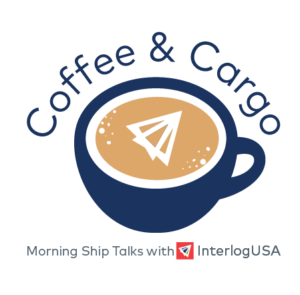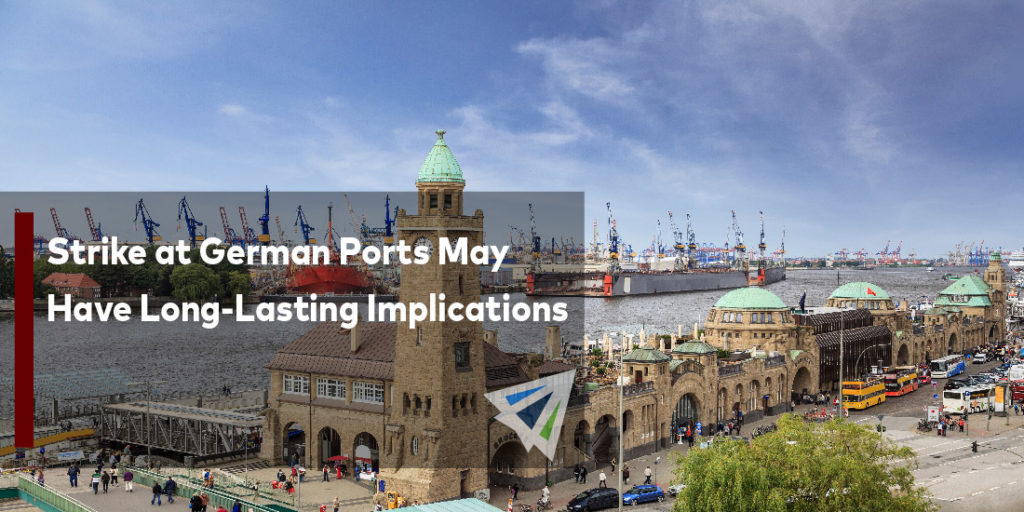Competitive Edge
July 20th, 2022
Stay Current with Interlog’s Weekly Newsletter:

Headlines
- The Brownsville Ship Channel is set to be widened and deepened with the recent signing of a partnership agreement between the Brownsville Navigation District (BND) and U.S. Army Corps of Engineers (USACE), the Port of Brownsville reports.
UPDATE: U.S./Canada Ports – Number of Vessels at Anchor as of 07-19-22
- Savannah: 40 Vessels at Anchor (0)
- Houston: 32 Vessels at Anchor (-5)
- Vancouver: 27 Vessels at Anchor (+7)
- New York/Newark: 17 Vessels at Anchor (+1)
- Los Angeles/Long Beach: 14 Vessels at Anchor (+7)
- San Francisco/Oakland: 8 Vessels at Anchor (-1)
- Charleston: 1 Vessels at Anchor (-1)
Note: This count does not include vessels moored and being unloaded at port docks. Colored numbers in parentheses represents the change from last week over.
Courtesy: MarineTraffic
IMPORT: Asia to North America (TPEB)
Recent Developments:
- Contract negotiations between the International Longshore and Warehouse Union (ILWU) and Pacific Maritime Association (PMA) remain active. The existing labor contract between the two parties expired July 1.
- Both the ILWU and PMA have commented neither is planning on striking or shutting down operations amid ongoing talks. The two parties state their confidence that there will be no disruptions at USWC ports.
- Sources close to the talks speculate a deal will be reached by August or September. However, there has been no official comment or release from either party that confirms this is true.
Rates: Spot rates from Asia to the US East Coast are at their lowest level of 2022, reports indicate.
- Although rates are softened, forecasts remain in play for a boom in import activity. In such an event, shippers can expect increases to rates.
Space: Space is generally open for now, but any surges in demand and volumes will tighten space.
Capacity: Capacity has tightened in pockets. A certain trend of shippers shifting to the USEC has developed due to uncertainty around West Coast (ILWU and PMA) labor talks and fears of related disruptions at West Coast ports.
Equipment: Intermodal systems remain stressed with congestion and truck and chassis deficits.
TIPS: Book at least 2-3 weeks prior to ready date. Strongly consider premium services and, if cargo is ready now, make plans to move as soon as possible with the current openings in space and fallen rates. When possible, shippers with fixed-rate contacts should take advantage of these softened rates on the floating market.
IMPORT: Europe to North America (TAWB)
Recent Developments:
- Northern European hubs, primarily German and Netherland ports, are experiencing critical congestion due to labor slowdowns and strikes.
- Dock workers at Germany’s North Sea ports, Hamburg, Bremerhaven, and Wilhelmshaven, went on strike last Friday for 48 hours paralyzing cargo handling. Check out our blog for a closer look.
- USWC ports have seen alleviated congestion and improvements to vessel waiting times. There are no considerable disruptions directly related to ongoing WC labor talks.
- On the USEC, both ports of New York/Newark and Savannah have substantial numbers of anchored vessels offshore.
- Higher conversions to air freight among American importers as challenges continue for ocean freight.
Rates: Rates remain elevated for July. Equipment shortages are leading to new GRIs for some Mediterranean origins. Higher fuel costs are also contributing to rate increases.
Space: Space remains critical for USEC and USWC. However, there have been glimpses of improvements on both ends.
Capacity: Capacity for both North Europe and Mediterranean services remain gripped.
Equipment: Equipment at European seaports is not as readily available as it has been for the past few months. Inland terminals in Europe are also still reporting equipment shortages. On the U.S. side, truck and chassis availability remain concerning, especially with the latter.
TIPS: Book 5 or more weeks prior to ready date. Shippers are strongly advised to use premium service for no-roll options and improved reliability for their cargo.
EXPORT: North America to Asia
Recent Developments:
- For the USEC, waiting vessels remain an issue for Savannah and New York/Newark.
- Diminished schedule integrity continues to challenge post earliest return dates.
- Vessel arrivals remain smooth for USWC POLs.
Rates: Some carriers have issued limited GRIs for July.
Capacity: Available capacity remains fluid for USWC POLs.
Equipment: Truck, container, and chassis availability remains dire and has significantly contributed to congestion of the intermodal system and IPI origins. Standard equipment at ports remains available unless carriers advise otherwise.
- Some carriers have noted rail operations from Chicago to USWC ports have become more fluid and can handle an uptick in volume.
TIPS: Book 4 to 5 weeks prior to time of departure to secure necessary equipment and vessel space.
Did You Know: The Port of Virgina sees record volumes in 2022
These record volumes are largely due to shippers’ desires to avoid congestion at the West Coast ports.
Furthermore, at the Norfolk port, volumes in 2022 came in at 3.7 million twenty-foot equivalent units, which is up 14.7% from fiscal year 2021.
Additionally, volumes in June were at 317,742 TEUs, which is nearly 13% higher than June 2021.
Source: Freightwaves
Freight News
Ports on the U.S. West, East, and Gulf Coast are all seeing their fair share of supply chain turbulence
In the month of June, year-over-year, U.S. imports from Asia rose nearly 13%, which made it the busiest June ever on the east bound trans-Pacific lane. Additionally, amidst all of this, the USWC labor talks have made the ports along the U.S. East and Gulf coasts see increases in their share of imports from Asia, throughout the first half of 2022.
U.S. West Coast: Even with U.S. imports from Asia seeing success at the USEC ports, the USWC still saw a great deal themselves. For instance, the Port of Los Angeles recently released their June cargo figures which detailed that they had their busiest June ever for total container volumes (878,000 TEUs) – including laden imports and exports and empty container returns – the Journal of Commerce reported. The main reason for the surge was because of empty containers. Data shows that empties increased 8% year-over-year to 338,041 TEUs, which is still expected to remain steady as imports remain strong from Asia.
U.S. East and Gulf Coast: With the increase of U.S. imports from Asia, the Ports out on the East and Gulf coast are seeing the congestion that comes with those increases. As of yesterday, a report showed the total number of containerships waiting to berth at U.S. ports had fallen from a peak of 150 at the start of the year to 125. However, most of those vessels are waiting at facilities on the east coast.
Specifically, the East Coast’s share of total U.S. imports from Asia was at 34.3% in the first half, compared to 32.8 percent the year before and the Gulf Coast’s share rose to 6.7 percent from 5.3 percent the year prior, data shows. A big reason the East Coast has been seeing more U.S. imports from Asia is due to the ILWU contract negotiations taking place on the USWC. The contract expired on July 1st, and many shippers have been weary on if those negotiations would have an impact on things at the ports in the West Coast.
The supply chain industry: A new “normal”
Some say the supply chain industry is starting to “normalize” but is that really true? We believe that the industry will most likely not go back to “normal” but instead adopt and be a part of a new “normal.” So, what does a new “normal” even mean?
At Interlog, we feel like the outlook shows some signs of stabilization, but we are not comparing it to the “normal” pre-pandemic levels, because there are constantly shifts, especially as the world evolves. If we think back to March 2020 when the impacts of the pandemic really hit and rates skyrocketed for the better part of the year and into 2021, with rates in the summer of 2021 hitting their peaks. Throughout 2022 rates have had their ebbs and flows as partial covid related lockdowns occurred out in parts of Asia. Now, they are starting to ease. But that poses the question, will we ever get back to “normal” like it was before the pandemic? While you can never say never, it’s best to be prepared for what the new normal looks like now and for the foreseeable future.
How Interlog is setting our customers up to be prepared during these “shifts” in the industry that occur at times:
What we are doing is working out ways to a better “normal” for our customers to keep their costs in check, improve supply chains, and overall exceed expectations. Excellent visibility and customer service are two tools that we pride ourselves in providing our customers.
Watch today's webinar:

Make sure you watch today’s webinar, where we had Andrew Danas, a Partner at Grove, Jaskiewicz and Cobert, LLP on to discuss volume commitments, rate volatility, and demurrage/detention costs, with our experts!
Sign up for our
industry answers
Our team works to provide valuable, unique, and relevant content to assist you in finding solutions. Sign up now.
